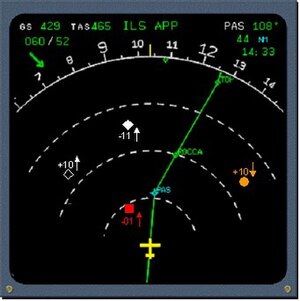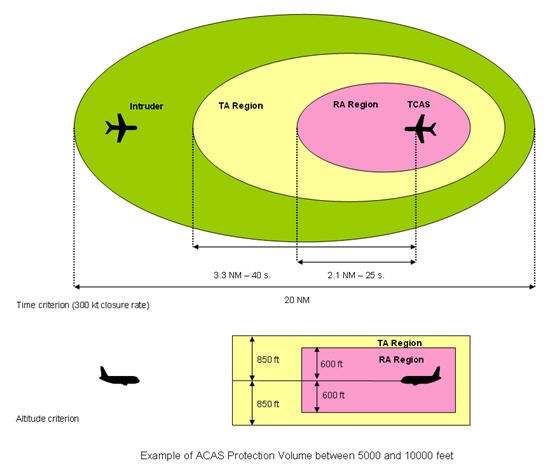Some people who are fearful flyers are concerned about mid-air collisions. In the early days of air transport there were some of these ugly events but, like every other time something bad has happened in aviation, these events were the impetus to build a safer, better system. Here’s a little info about one such improvement that gives each airliner a “force-field-like” bubble of protection…
If you are interested in technological advancements, I must tell you about the GREATEST advancement in airline safety in the last 20-30 years that is aimed at preventing collisions between aircraft…
TCAS – Traffic Collision Avoidance System
Without getting too technical on it, TCAS is a gizmo now fitted to every airliner in the civilised world. It is a “last line of defence” system that determines if airliners are going to fly too close and safely guides them apart.
It is a system that is not intended to be relied upon… air traffic control (ATC) has also had huge improvements in the last few years, with more radar and other systems allowing controllers to know exactly where all the planes are, and predictive software that warns them if there is a potential conflict — so they can give each aircraft plenty of warning and avoidance instructions.
Also the ATC procedures in general have improved, providing safety and separation between all airliners in our busy skies.
TCAS, then, is a last line of defence if all of the many other protections fail. Each airliner has a TCAS display, a little like a radar screen, showing where all of the other airliners are nearby.
That’s clever enough but it gets better…
TCAS is a smart system that continuously calculates the trajectories of all nearby aircraft and makes predictions about whether or not they will get too close.
That too is brilliant, but it even gets better than that…
If the TCAS system in an airliner predicts a conflict it will instruct the pilots, in LOUD AND POSITIVE WORDS, the corrective action required. For example, it might tell the pilots to “CLIMB, CLIMB NOW!” if it predicts that to be the best course of action, and it displays the rate of climb required to regain safe separation. The pilots are trained to respond to this command instantly (actually, within 5 seconds is good enough… 5 seconds is actually quite a long time, if you think about it.)
But, the system is CLEVERER STILL! It will communucate with the TCAS system in the other airliner, and that TCAS will tell their pilots to do the opposite. In the above example, for example, the other TCAS would say “DESCEND, DESCEND NOW!”
So the pilots in both airliners are taking a coordinated action that results in regaining safe separation.
This super-clever device is, as I said, a last line of defence if all of the other procedures break down. But it works, reliably and brilliantly. It provides a “force-field like” bubble of protection around your airliner, and all the other airliners in the sky.
If you want some more technical info…

